Prof. Dr Jan Pajak THE NEW ZEALAND EXPLOSION OF ... - Totalizm
Prof. Dr Jan Pajak THE NEW ZEALAND EXPLOSION OF ... - Totalizm
Prof. Dr Jan Pajak THE NEW ZEALAND EXPLOSION OF ... - Totalizm
- No tags were found...
Create successful ePaper yourself
Turn your PDF publications into a flip-book with our unique Google optimized e-Paper software.
F-81#1 #2 #3#4 #5 #6Fig. F3. Six basic classes of the Magnocraft/UFO arrangements. Each of these is formedthrough the magnetic coupling together of a number of disk-shaped vehicles (mainly Magnocrafttype K3 are illustrated here). The differences between individual classes result from the kind ofpropulsors which cling to each other in the coupled spaceship (e.g. main to main, main to side, orside to side), magnetic interactions between these propulsors (e.g. attraction or repulsion), and thetype of contact between the vehicles (e.g. steady, labile, or no contact at all). The diagramillustrates:#1. Physical flying complexes. These remain in stable contact, while their propulsors attracteach other. Shown above is a spherical complex formed by two vehicles which cling to each otherby their bases. Apart from this arrangement, class #1 includes: (a) stacked-cigar complexes (formedwhen several vehicles of the same type are stacked one on the top of other like a pile of saucers inthe kitchen cupboard - see Figure F1), (b) double ended cigars (formed from two cigars coupled likea spherical complex), and (c) fir-tree complexes (formed when vehicles of different types arestacked one on the top of the other).#2. Semi-attached configurations. Formed when Magnocraft/UFO have only a labile contact(e.g. obtained when two vehicles are joined by their spherical domes) and their side propulsorsrepel each other. The black bars joining the propulsors oriented attractively towards each other arecolumns of powerful magnetic field which traps the light.#3. Detached configurations. These appear when coupled vehicles do not touch each otherphysically, but are kept in a permanent configuration due to the equilibrium of repelling andattracting forces produced by their propulsors (the square black bars joining twin-chamber capsulesfrom side propulsors are columns of powerful magnetic field).#4. Carrier platforms. These are formed when vehicles of a smaller type cling under the sidepropulsors of a "mother ship". (Shown are four K3 type vehicles attached to a K5 type mother ship).#5. Flying systems. Formed when a number of cigar shaped complexes couple together withtheir side propulsors.#6. Flying clusters. These are formed through touchless sideways coupling of a number ofarrangements or single vehicles into a kind of flying train. Illustrated is a "flying cross". Magneticcircuits which separate (repel) subsequent vehicles are shown with broken lines. Apart from these,there is a number of coupling (attractive) magnetic circuits, not marked in this illustration butindicated in Figure G8a (or in Figure F13 from monograph [1/4]).


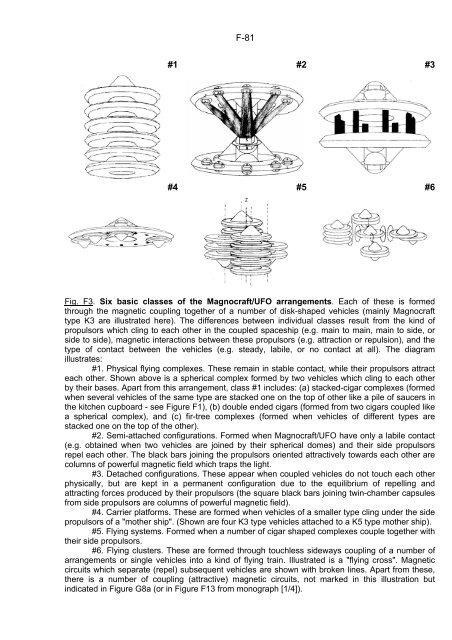
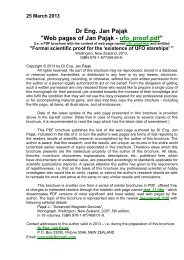


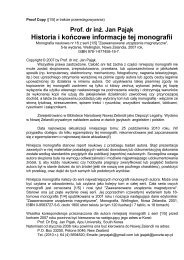
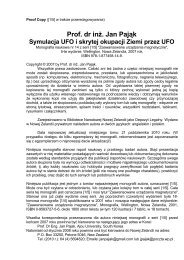
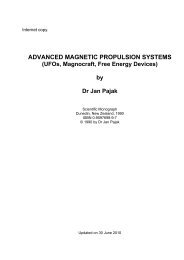
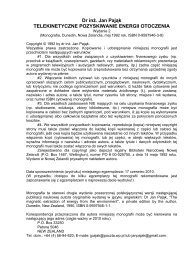
![[1/4p]: PDF - Totalizm](https://img.yumpu.com/45003232/1/184x260/1-4p-pdf-totalizm.jpg?quality=85)
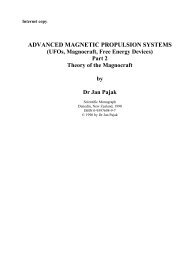
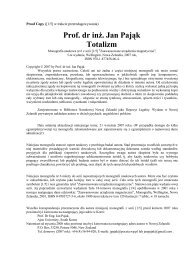
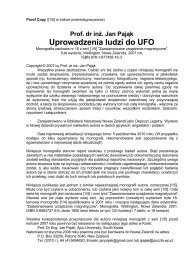
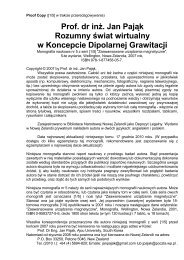
![[1/4p]: PDF - Totalizm](https://img.yumpu.com/39351336/1/184x260/1-4p-pdf-totalizm.jpg?quality=85)
